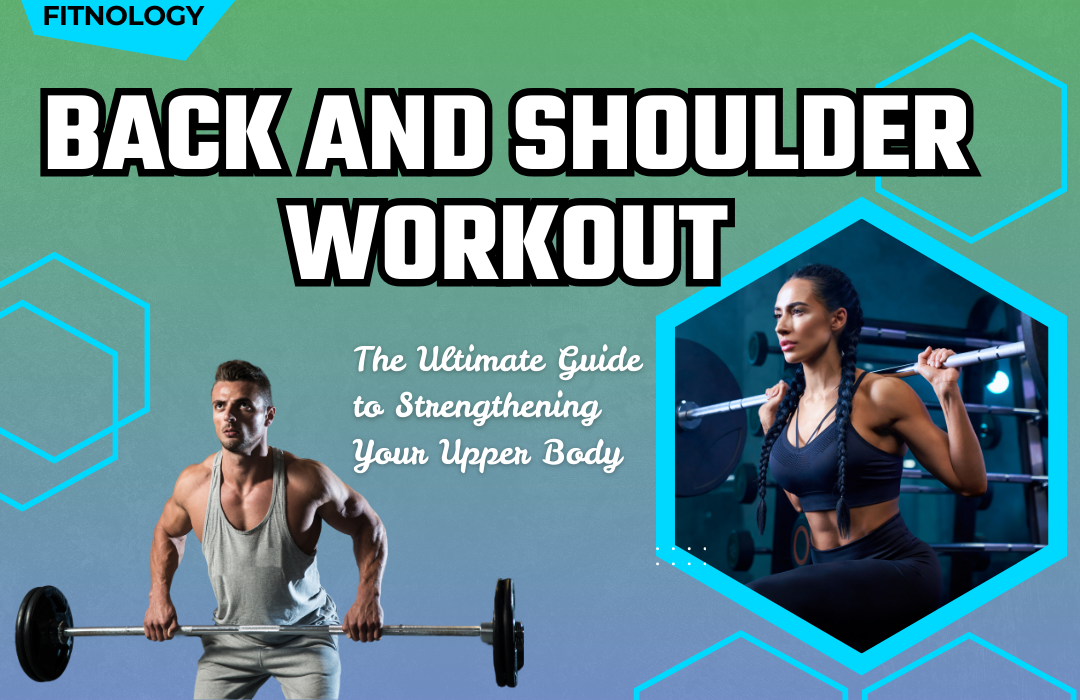Introduction :
Most people concentrate on their chests, arms, and legs when it comes to exercising. But back and shoulder workout is equally important, if not even more. They are important for maintaining good posture, improving body strength, and preventing injury. No matter if you are a novice or an experienced gym goer, strengthening the back and shoulders can help you feel and move better. It will also make you look and appear more balanced. In this blog post, we’ll dive into the importance of these muscles, common mistakes people make, and a practical workout plan that targets the back and shoulders using the PAS (Problem-Agitate-Solution) copywriting framework.
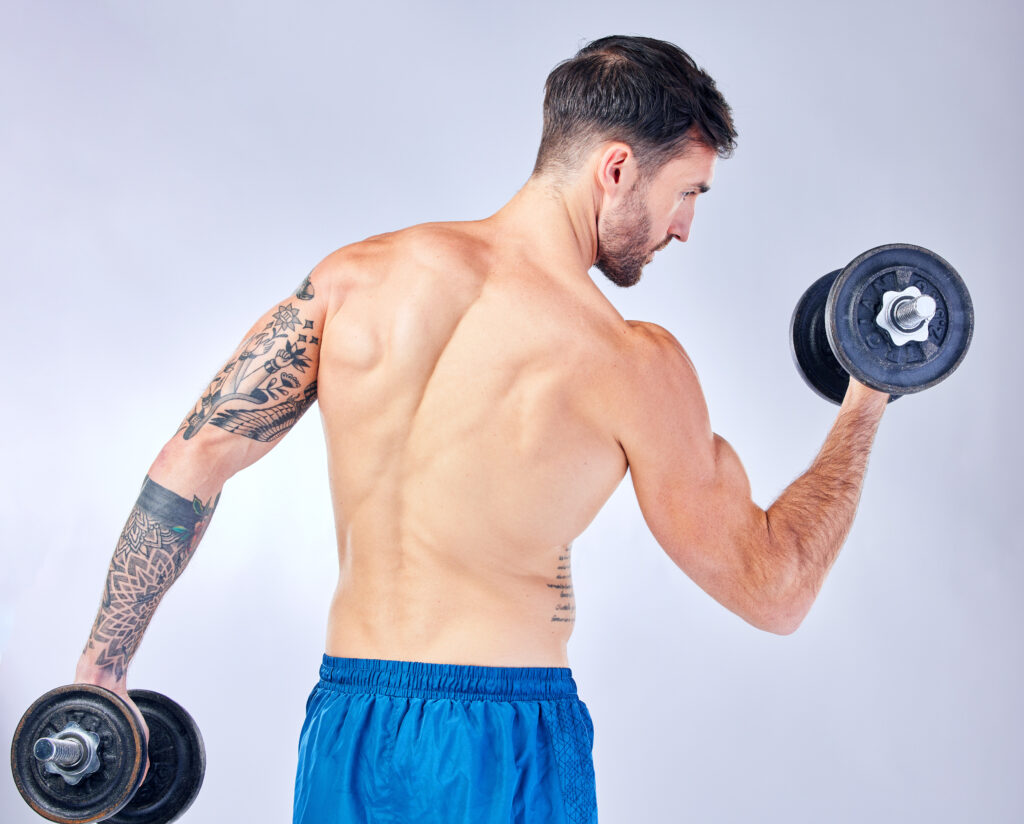
Problem: Neglecting the Back and Shoulders
Many people overlook the back and shoulders in their workouts. This is especially true when they focus on the arms or chest. As a result, the back muscles–particularly the upper back–remain underdeveloped. In favor of larger muscle groups, shoulders are often neglected.
A poor upper back can cause rounded shoulders, a slumped posture, and eventually pain. This can lead to rounded or slumped shoulders and affect confidence. It can also make everyday activities like lifting heavy objects or sitting at your desk more difficult.
If your shoulders don’t have enough strength, they are more susceptible to shoulder injuries. These are commonplace in both sports and everyday life. Lacking strength in the shoulders can restrict range of motion and stop you from lifting heavier loads or improving overall stability.
The face pulls really opened my eyes. Since incorporating these exercises, my shoulder pain has decreased, particularly after long sessions or long periods of sitting.
Agitate: The Consequences of Ignoring Back and Shoulder Strength
Neglecting the shoulders and back can have more than just an aesthetic impact. These areas of weakness can negatively impact your everyday life. Back pain is a common problem that many people suffer from as they get older or sit at their desks for extended periods. You’re more likely to develop muscle imbalances if you don’t have strong back muscles. This can result in poor posture.
If the shoulders aren’t properly trained, they can be particularly susceptible to injury. When people perform overhead movements without sufficient strength, the rotator cuff (a group of muscles, tendons, and ligaments that stabilize the shoulder) is one of the most vulnerable areas. Mobility issues and discomfort for several weeks is possible when encountering such obstacles.
Shoulder injuries are a common reason people quit the gym. A 2020 study conducted by the National Institute of Arthritis, Musculoskeletal Diseases, and Skin Diseases found that shoulder injuries account for about 15-20% of sports injuries. This is a large number and shows the importance of shoulder training.
It’s a challenge, but it is fun. The Overhead Press has helped me build a more defined and stronger shoulder region, giving me greater confidence at the gym.
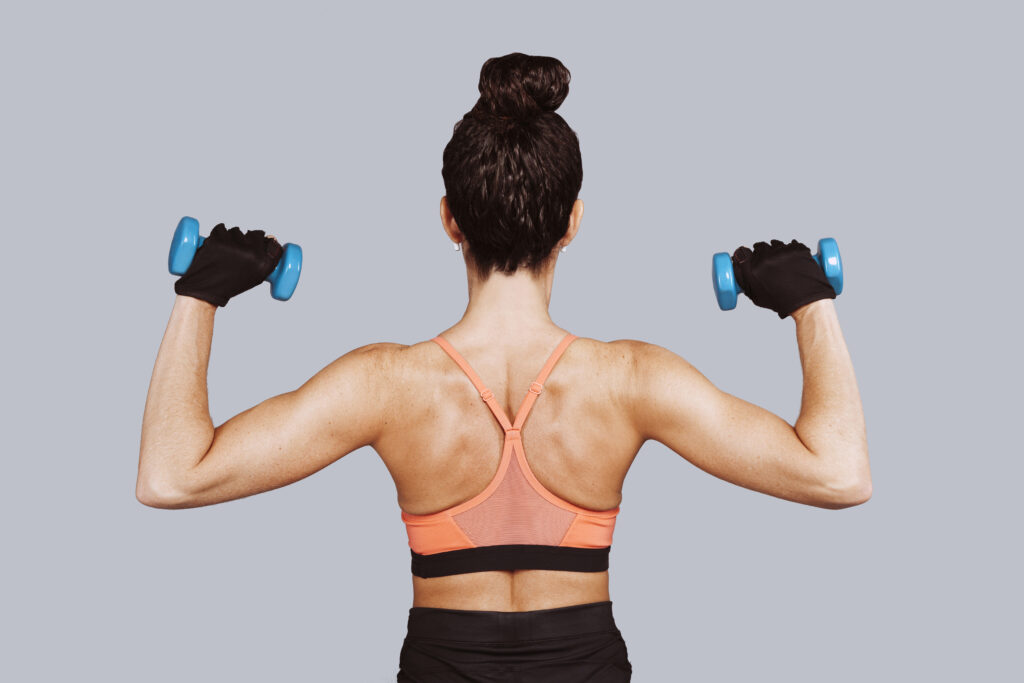
Solution: Back and Shoulder Workout Routine
You can prevent these problems by including a back and shoulder workout in your daily routine. The exercise improves your posture and strengthens muscles in the upper body to avoid injuries. This back and shoulders workout targets the correct areas to build up a strong and balanced upper body.
1. Deadlifts (three sets of eight to ten reps)
The deadlift is an effective compound exercise which targets your core, glutes, and hamstrings. You can strengthen the muscles along your back by incorporating deadlifts in your workout.
- Begin with feet that are shoulder-width apart. Grip the barbell just above your knees.
- As you raise the barbell, drive your hips through and stand tall.
- Keep your spine in neutral. Lower the barbell down slowly and with control.
The deadlift helps improve posture and build strength in the lower back. This is important for creating a powerful upper body.
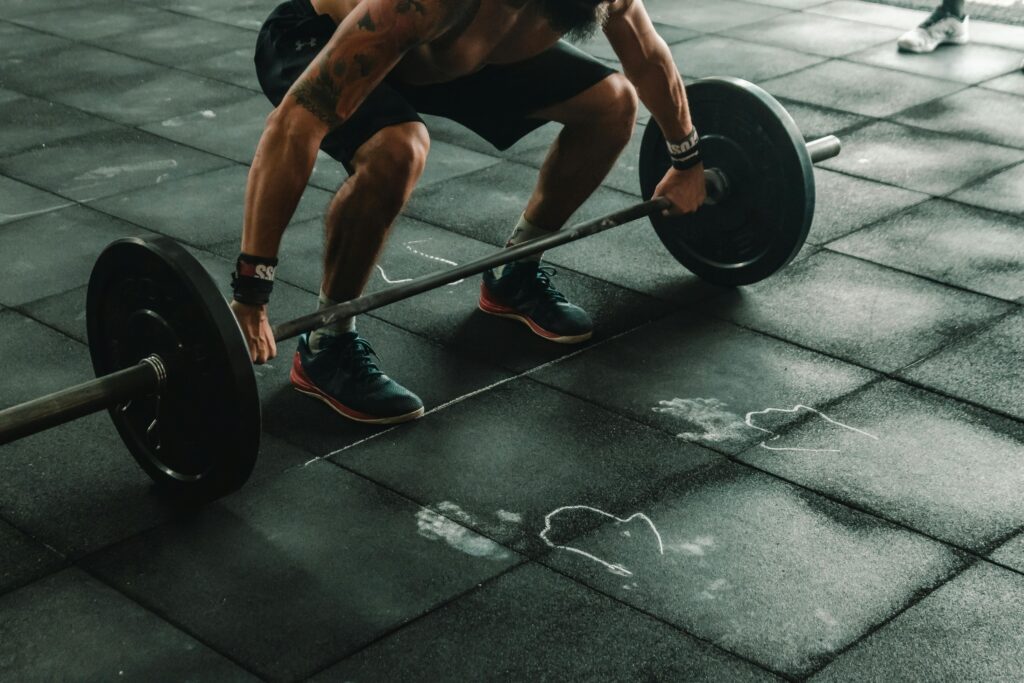
2. Overhead Press (three sets of 8-10 reps)
This exercise is a great way to strengthen the shoulder deltoid muscle. The upper traps are also targeted by this exercise, which helps you to develop shoulder stability and strength.
- Standing with feet at shoulder-width, grasp a barbell with bent elbows.
- Fully extend and press the barbell.
- Lower the barbell slowly back to your shoulders.
It is essential for developing broad shoulders and strong shoulders to use the overhead Press.

3. Lat Pulldown (three sets of 10-12 reps)
Lat pulldown is for strengthening both the upper back and latissimus muscle groups. This exercise is great for developing a V shape and helps to build upper-body width.
- As you sit at the machine, place your legs under the pads.
- Grab the bar and bring it to your chest while squeezing together your shoulder blades.
- Return the bar slowly to its original position.
The muscles supporting the spine are developed by performing lat pulldowns. This improves upper back strength.

4. Face Pulls (three sets of 12-15 reps)
Face pulls target the upper traps and rear deltoids. It is a great exercise for improving posture and the health of your shoulders.
- Connect a rope handle to the cable machine, and place it over a pulley system.
- Pull the rope up towards you while keeping your elbows raised.
- Release slowly to return to your starting position.
Face pulls can be used to strengthen the muscles surrounding the shoulder, which will help improve mobility and prevent injuries.
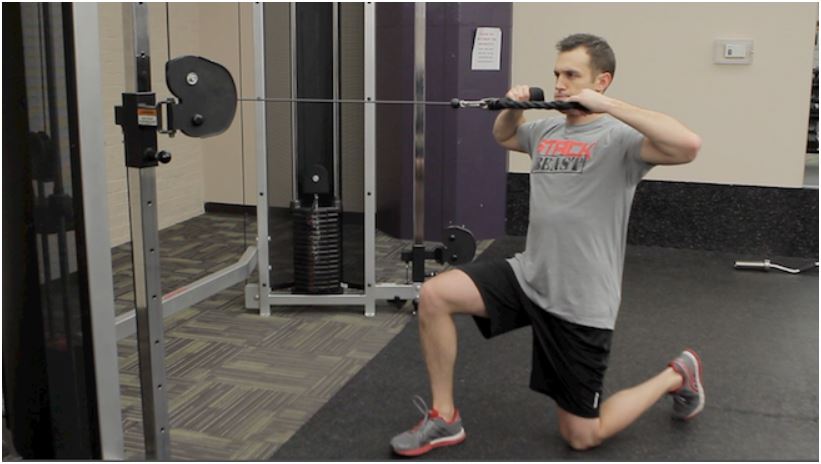
5. Three sets of eight to ten reps each: Bent Over Rows
Bent-over rows are another effective compound exercise designed to strengthen and stretch out upper back, lats, and traps muscles. This exercise builds strength and thickness in the back.
- Standing with feet slightly apart and your knees bent, hinge your hips forward.
- Squeeze your shoulder blades and grab a barbell in an overhand hold. Pull it toward your torso.
- Reduce the barbell with control.
The move will help you create a well-rounded, strong back.
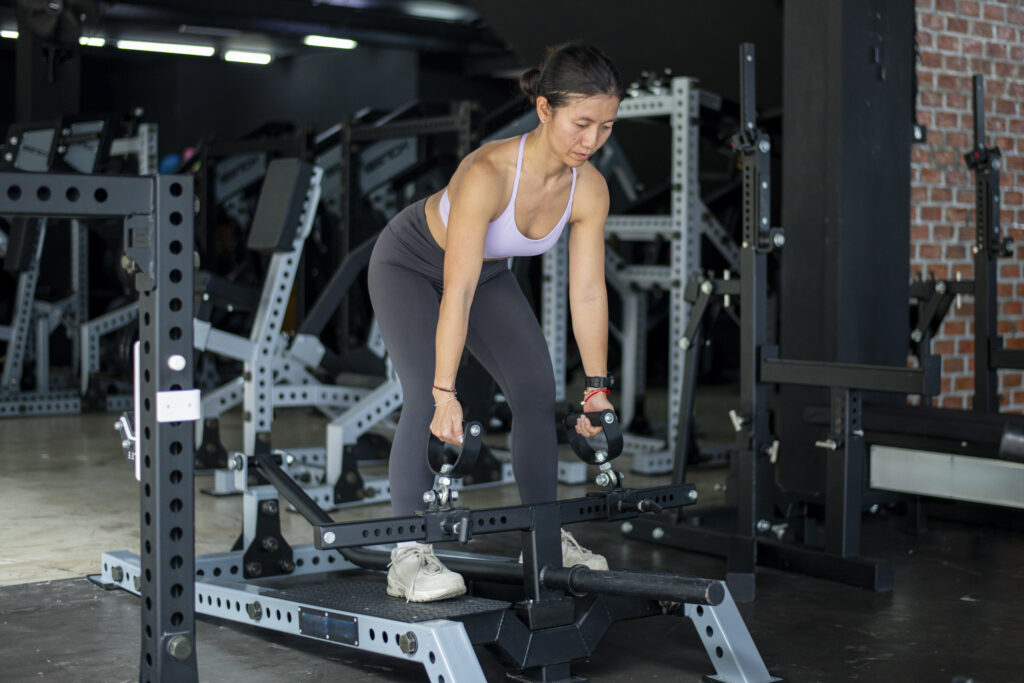
6. The Lateral Raises are three sets (12-15 reps)
The exercise isolates the middle deltoids and helps to create wider shoulders. The move adds size and definition to shoulders.
- Standing with dumbells in both hands, keep your arms at your side.
- Raising your arms to shoulder height, raise them outwards.
- Drop the dumbbells back slowly into their original positions.
For those who want to develop broader shoulders, lateral raises will be essential.

7. The reverse pec deck (3 sets, 12-15 reps)
It’s great to target the upper back and rear deltoids with this machine. This machine is perfect for improving posture and shoulder stability.
- Adjust the handle height to your shoulder while seated on the machine.
- Squeeze your shoulder blades while pulling the handles back.
- Return slowly to your starting position.
The rear delts are crucial to shoulder strength and health.
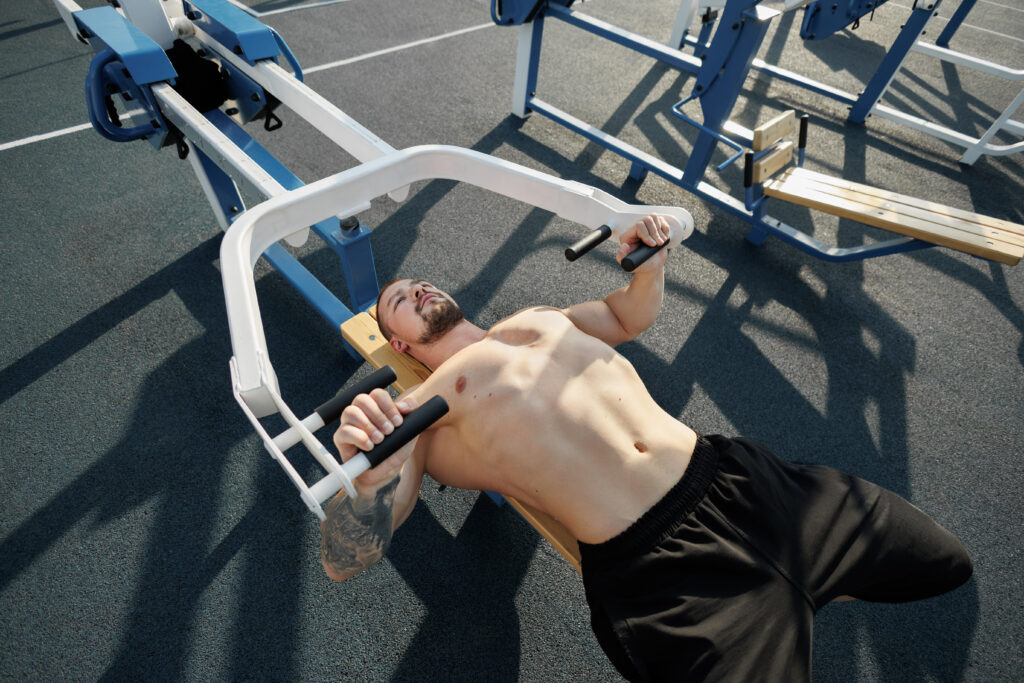
Personal Insights
My posture has improved dramatically after following a routine for my back and shoulders. I used to tend to slouch, but I now feel taller, more confident, and less prone to do so when standing or sitting. This is a great way to improve your comfort all day long.
At first, I was intimidated by deadlifts. As I improved my strength and technique, I began to realize how crucial they were. These are my favorite moves for building up a solid foundation for my other upper-body exercises.
Another exercise that I love is lat pulldowns. These exercises have helped me develop the width of my spine, and my posture has improved. I’m less hunched.
Shoulder raises are great way to target specific muscle groups within my shoulders and since adding them into my workout, they have helped define them more fully and improved overall definition of my shoulders.
Within “Back and Shoulder Workout: The Ultimate Guide to Strengthening Your Upper Body,” the readers will be able to gain an extensive investigation of the most effective exercises to increase the strength of your upper body and improve posture in general.
This complete guide explains fundamental movements that target the shoulders and back with step-by-step directions as well as tips for correct technique, and adjustments that work to all levels of fitness. Through a deeper understanding of the anatomy of muscles as well as the benefits of the upper body being strong, it is an essential resource for those who want to enhance their exercise routine, avoid injuries, and create an ideal body. If you’re an experienced gym goer or are just beginning your journey with fitness, this article will help you to construct a more powerful and more durable upper body.
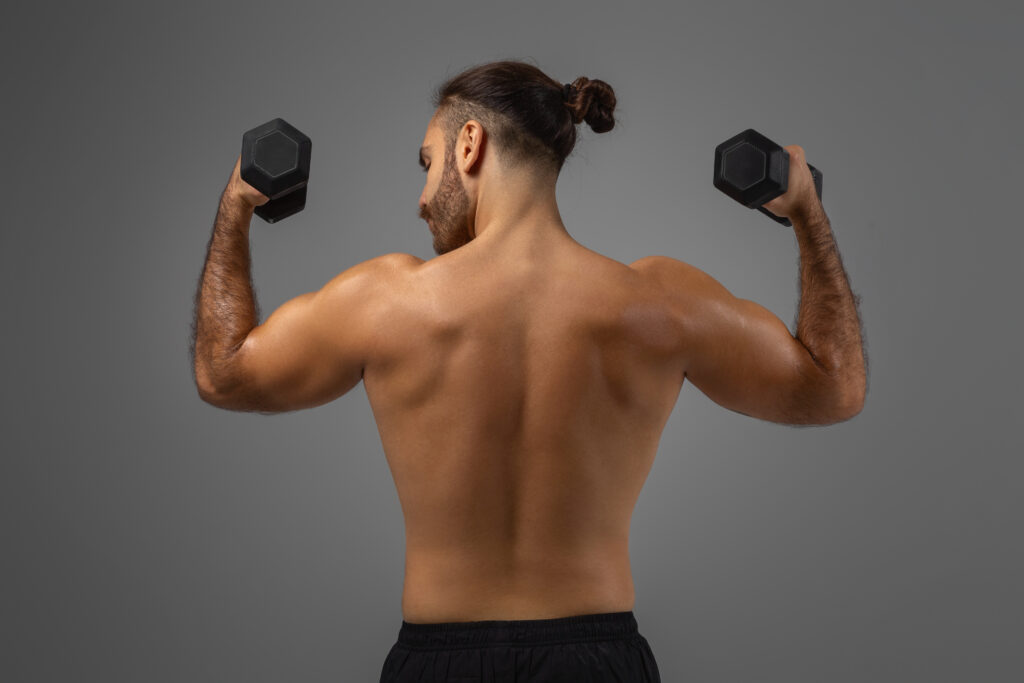
Conclusion
It’s not just about improving your physique. You’ll also improve overall stability and posture by developing strong shoulders and back muscles. Strong back and shoulder muscles are important whether you’re working out, sitting in front of your computer, or going through your everyday routine. You can build an upper body that is well-balanced by following this workout routine and being consistent. This will also help you reduce your risk of injury and increase overall performance. Stay consistent and listen to your body. You’ll be surprised at the results.
FAQs
What is the importance of training my shoulders and back?
It is important to train your shoulders and back in order to improve posture, prevent injuries, and build overall upper-body strength. They support your daily activities, and they help you balance muscle groups to reduce the chance of imbalances.
What is the frequency of back and shoulder exercises?
Train your shoulders and back at least twice a week to achieve optimal results. It allows muscle to recover while still providing sufficient stimulation for growth. Listen to your body, and give it at least 48 hours between workout sessions.
Which exercise is best for strengthening your back?
Deadlifting is one of the best exercises to strengthen the back. The deadlift targets many areas, including the glutes and hamstrings, as well as improving your posture.
Do I have to do both back and shoulder exercises at the same time?
You can do both back and shoulder exercises at the same time. It is common to combine back and shoulder exercises in the same workout since both muscles work together when performing compound movements such as rows or overhead presses.
What can I do to avoid injury while working out?
Focus on proper form and technique in order to reduce shoulder injury risk. Include exercises such as face pulls in your workouts to improve the stability of your shoulders and strengthen your rear delts. Warm up before every workout. Don’t force through pain.
How do the bench press and overhead Press differ for shoulder exercises?
By pressing the weights upward, the overhead Press directly targets the deltoid muscle, whereas the bench press works mainly the chest with secondary involvement of the shoulders. It is more efficient to develop shoulder strength with the overhead Press.
What are the best exercises to improve posture?
Exercises like bent-over rows, lat pulldowns and reverse pec deck can improve your posture and correct rounded shoulders. These exercises aim to strengthen muscles that maintain an upright posture by stabilizing and supporting an upright spine.
What are the exercises to strengthen your rear deltoids?
Exercises like the reverse pec deck machine and face pulls are great for targeting your rear deltoids. This area must be strengthened to achieve a balanced shoulder and reduce the chance of injury.
Do I need to use heavier or lighter weights when doing back and shoulder exercises?
What you want to achieve will determine what weights and reps are best for your body. For strength, you should use heavier weights and lower repetitions. Lighter weights and higher repetitions are best for muscle endurance. Maintain good form regardless of how much weight you are using.
What is the timeframe for seeing results after back and shoulder exercises?
After 4-6 weeks, you can see improvements in posture and strength. Visible muscle changes usually take 8-12 weeks, depending on diet, workout intensity, and recovery.

